Especially if you are in a high-risk category, you must take proactive steps to protect your skin. When outdoors, wear sunglasses and a hat; use a good sunblock on your lips and all exposed skin; and cover up. Don't take chances!
What Are the Statistics?
According to the Skin Cancer Foundation, here are some of the facts (gathered in 2014) about melanoma skin cancers:
Melanoma does not discriminate against races, religions, or ethnicities. Everyone may be at risk. Visit your dermatologist annually to better understand your personal risk factor.
What Should You Look For?
First of all, you should visit a dermatologist yearly. In between visits, you should take your time and examine your skin regularly; ask a "buddy" to help you. Take and date photos of moles that might concern you and keep an eye on them.
Here's what you, your beauty industry professional, and your dermatologist are looking for:
Are You At Risk?
There are different types of skin cancers, but melanoma is the deadliest form. And, some people are more at-risk than others. Do you have blonde or red hair? Are your eyes light in color? Is your skin pale and/or freckled? Sometimes we are given lemons with which to deal, but we CAN take action.
The first step is to become aware of your risk factors. (Visit your dermatologist annually to learn more.) Then, take proactive and preventative steps to stay aware and vigilant.
May is Melanoma Awareness Month
It's the month of May. The weather is getting nicer. You and your friends are flocking to the sunshine. Are you consciously and actively putting on sunscreen? Wearing hats? Sporting sunglasses? As wonderful as the sun feels, remember that its rays can be deadly to your skin.
When you go to your favorite salon to try that new summer hairdo, find out if the salon's professionals have been trained to identify potential melanoma skin cancers. After all, you get your hair done more often than you visit your dermatologist! It doesn't hurt to get all the help you can get to stay vigilant and take care of your skin.
The You Can Make a Difference Foundation is doing what it can to work with beauty industry professionals to identify potential skin cancer melanomas. You can help too by spreading the word and donating today.
Melanoma Skin Cancer Awareness Training 101 at DASS
With Dr. Diamondis J. Papadopoulos of MetroDerm at the helm, fifty beauty industry professionals began Melanoma Skin Cancer Awareness training at the DASS Salon and Spa in the Perimeter Mall in Dunwoody, Georgia on Tuesday, January 6, 2015.
The 20-minute presentation explained what melanoma skin cancer is; its associated risks; the importance of early detection; and the key role that beauty industry professionals can play in spotting a potential melanoma and urging clients to see a dermatologist for thorough body examination.
Given the long-term relationships that most beauty industry professionals build with their clients, and the frequency of meetings, the DASS Salon and Spa professionals valued this training immensely. They know they now are equipped with vital information that could enable them to identify a possible melanoma skin cancer. One day, they could save a client's life!
A special thanks to Don and Sylvia Shaw, owners of DASS; Frank and Belinda Gambuzzi, owners of Visage: Salon, Spa and Studio; Phil Fennel of SalonWired; and Cheri Levitan who were on hand at the training in show of support for You Can Make a Difference.
A "Call to Action"
The following “Call to Action” was written in an article by Deborah S. Sarnoff, MD. She said:
“In my opinion, a skin cancer educational program targeting hair professionals has the potential to increase the early detection of skin cancers on high-risk anatomical areas such as the scalp and neck. Far more people visit the barber or hair stylist than the dermatologist on a regular basis.
Hair professionals, including those who shampoo the scalp, have a more complete view of the scalp than the rest of us do — and they can see it even more easily when the hair is wet. They spend an extended period of time with each client, often at monthly intervals. They are well-positioned to detect a scalp lesion and even to notice an early change.
Hair stylists need to know that by speaking up they are not offending the client — they are potentially saving a life. Taking a photo with a client’s cell phone or pointing out the area in a mirror and encouraging the client to seek out professional advice from a dermatologist may indeed be lifesaving. Early detection and treatment usually result in the complete cure of melanoma, whereas melanomas found at an advanced stage may be curable less than 15 percent of the time.”
* * *
Dr. Sarnoff was diagnosed with skin cancer. It was detected by her hair stylist. The You Can Make a Difference Foundation wants to take Dr. Sarnoff up on her “Call to Action” by helping raise awareness throughout the beauty industry of the potential presence of skin cancers in their clientele. We hope to engage hair stylists, colorists, skin aestheticians, manicurists, cosmetologists, make up artists, and massage therapists are all beauty professionals who can serve as the first line of defense against possible skin cancers. If a suspicious spot is identified, they easily can encourage their clients to visit a dermatologist for a thorough skin examination. With proper education – anyone potentially could save a life.





